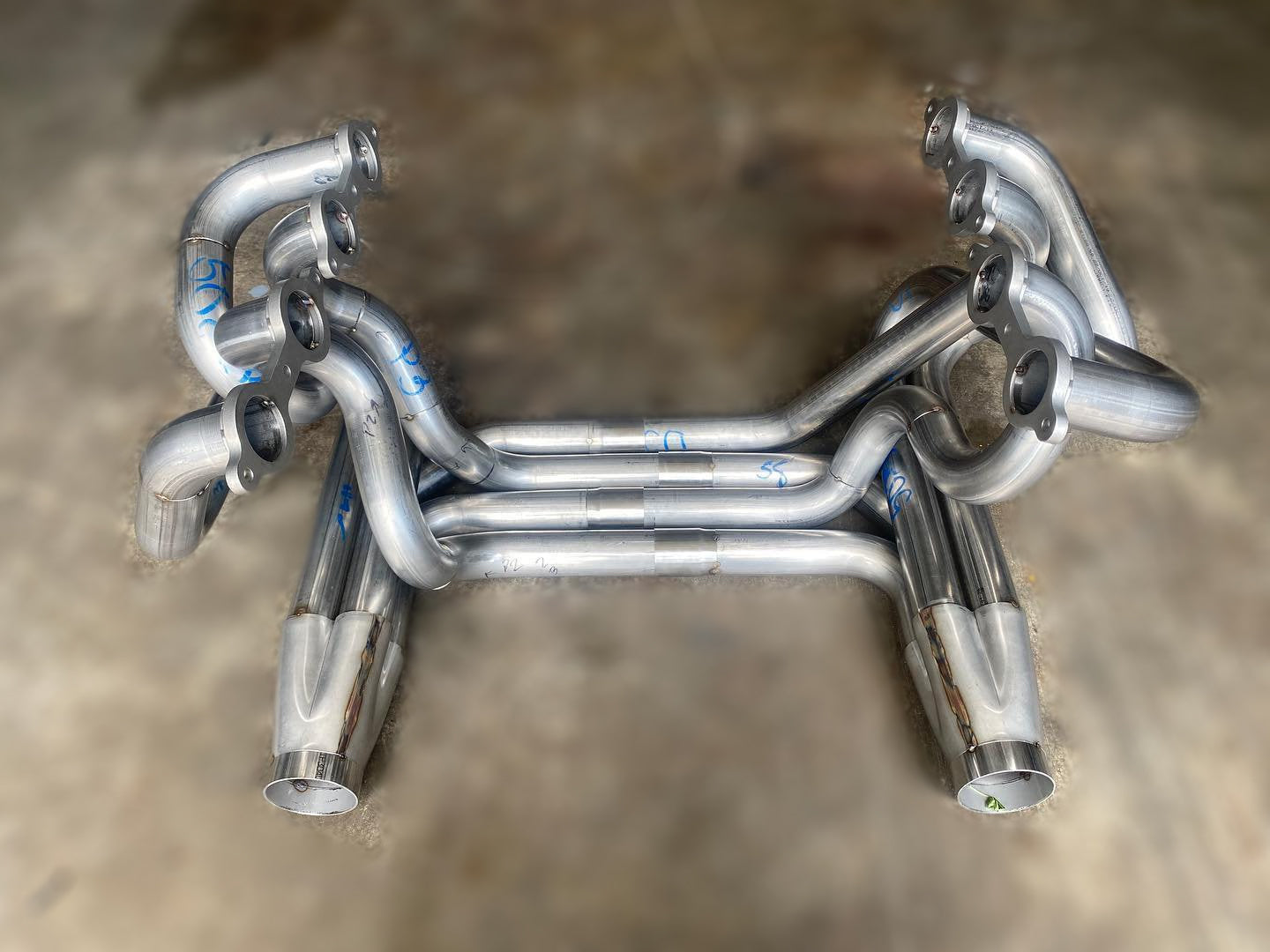While your long post is helpful, crossplane V8s don't even have even firing intervals on each bank. Isn't it well known to not get hung up on making a perfect 4-1 equal length collector for one bank of a crossplane V8, since it doesn't matter as the pulses aren't equally spaced anyway?Hoffman900 wrote: ↑30 Sep 2024, 15:08I disagree with several statements here regarding length vs bends and most just sound like canned magazine or ChatGPT responses. I base mine on personal experience working with and conversations with a header fabricator who has been involved in championship winning NASCAR, World of Outlaws, NHRA, and IMSA campaigns, as well as some NASCAR contacts and knowing what their headers spec like.
First, equal lengths only matter if every cylinder has the same induction length and has the same power potential. We know this isn’t always the case due to things like manifold assymetry. The other factor is mass flow isn’t always the same… there is charge robbing / intake interference happening in the intake plenum (yes even for NA F1 cars, it’s all documented by Honda) and its effect varies depending, there is flow assymetry in the airbox from the shape, and bends will determine a primaries ultimate ability to move mass.
To quote Dr Randolph of ECR and formerly Hendricks, best power is often when blow down time losses are balanced with pumping losses, from an exhaust / exhaust timing standpoint.
On road race V8s, with peak power under 9,000rpm, it’s usually better to have 2x 4-2-1 > feeding into a single tailpipe. Usually power upstairs stays the same but mid range and low end is better. The x-pipe is partly a similiar effect but existed because NASCAR had a rule on what the pipe exit should look like and their flat “boom tubes” require it to be so.
Does what you are saying really also apply equally to flatplane V8 engines typical of Formula One and non-American small block V8 engines?
For example this flatplane Mugen V8 Formula 3000/Nippon engine has (presumably) an equal length 4-1 header despite the extra bends and lengths needed (obviously it's very long due to the low rpm, IIRC 10,000rpm is the max for F3000/F-Nippon?):

Or another low-revving flatplane Mugen V8 with a 4-2-1 header which seems to be equal length:

Even with crossplane small block V8s, is equal length really not important on 180-degree crossover headers when used on small block crossplane V8 engines, like those used by Perkins Engineering in V8 Supercars between 2007 and 2012, or on the Ford GT40 in the 1960's?
Unfortunately Jack Perkins from Perkins Engineering doesn't have one of those exact era of engines in the Perkins Engineering (now a restoration company) workshop to share (they got it to fit with the 2003-on Falcon-style double wishbone front subframe on their Commodores -- parity! also for parity the Holden Motorsport/Aurora heads had equal spaced ports like the Yates D3-- by going to a front steer setup), but presumably it was something like this:

Here's a sound clip of the Perkins Engineering 180-degree header for the (HMS) Chevy small block:
(The Jack Daniels' car: it's a little hard to isolate the exhaust sound from the intake as obviously the V8 Supercars ran eight trumpets with eight ITBs and the intakes are also quite loud.)
The above header pictured above is actually a Duke Engineering header for LS-swapped Porsche 911s, in the case people don't want their LS-swap 911 to sound too American I guess:
But as you can see even with the Jack Daniels' car even in competition applications, there are some advantages despite the extra complexity. They did run the system for five years until they went to Nissan. Surely (reasonably) equal length is important on a crossover header even on crossplane USA small-block V8 engine where equal length would (normally) not be that important?
Thankfully there is plenty of space in the sidepods of the Formula 3000/Nippon car to fit incredibly long and large headers (or power/torque considerations are more important than packaging, or bargeboards were rudimentary at the time and big flat sidepods to manage front wheel wake was the thinking anyway?).
Are not stepped headers now popular to obtain a variation of reverberation effects and effectively change the tuned lengths?



